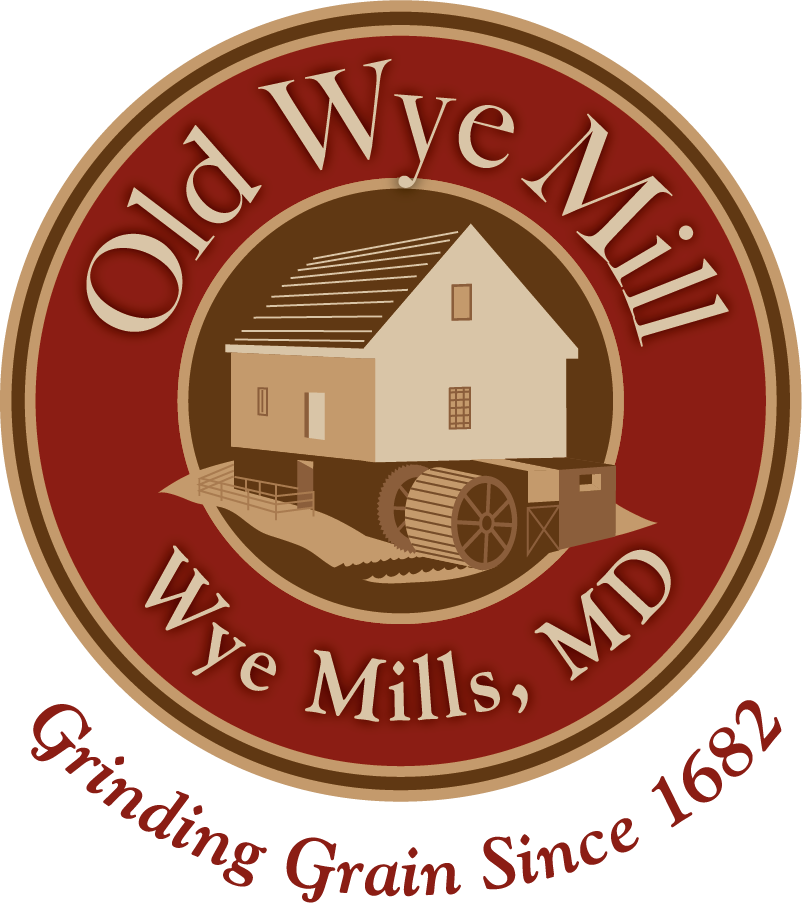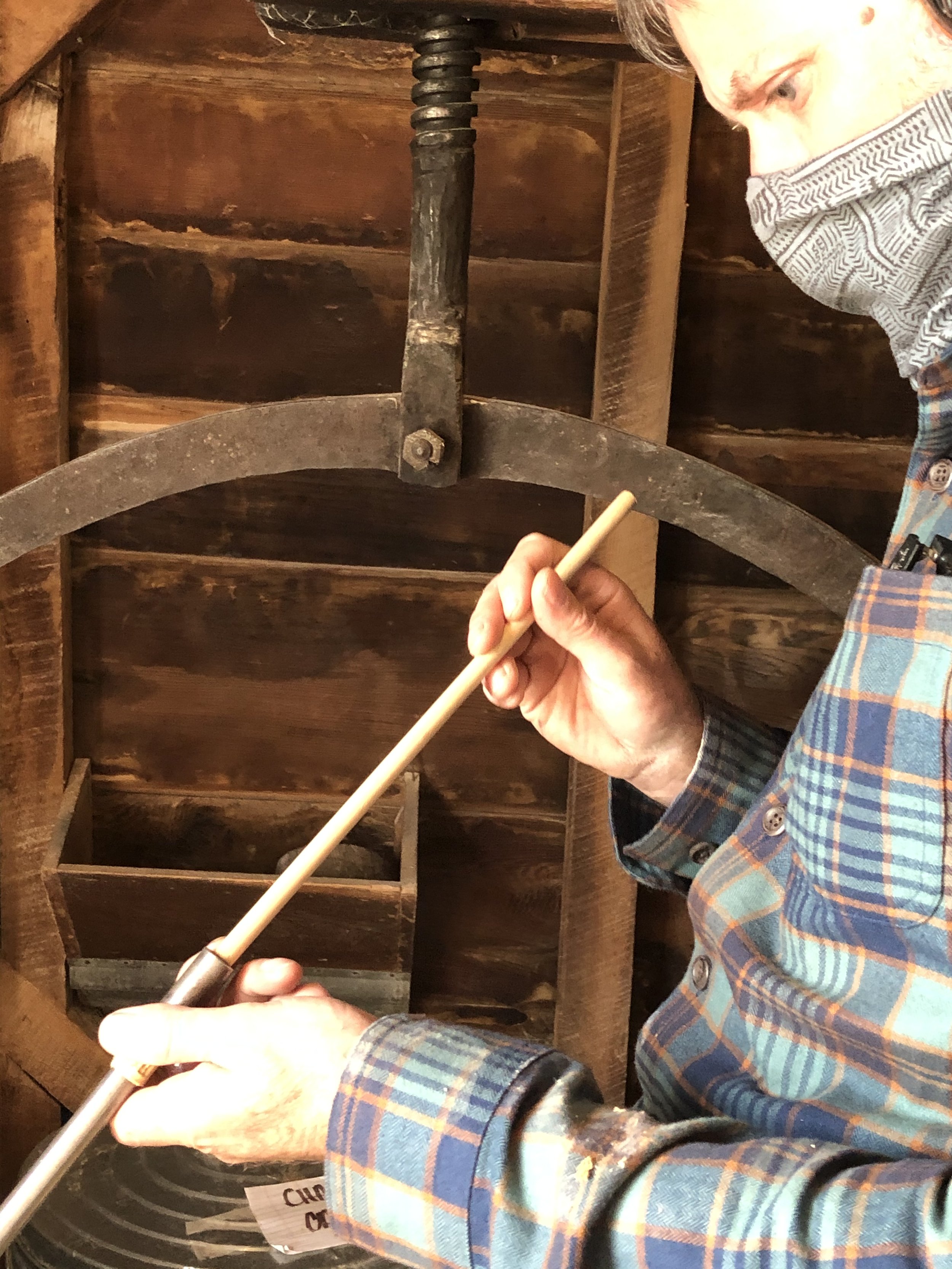Old Wye Mill Releases Tree-Ring Study— Analysis Shows Structure Built in Mid-1700s
Michael Worthington with core sample.
Old Wye Mill (OWM) has just released a study by the Oxford Tree-Ring Laboratory which dates the historic mill structure to the winter of 1753-1754. OWM commissioned Oxford to conduct the study as part of a comprehensive upgrade of its visitor experience, funded by the Maryland Heritage Areas Authority through the Stories of the Chesapeake Heritage Area. Old Wye Mill is one of Maryland’s most remarkable places: the historic grist mill is the oldest continuously operated water-powered mill in America, and Maryland’s oldest continuously operating business.
Dendrochronology is the science of dating events or artifacts using the characteristic patterns of annual growth rings in tree trunks. While long-known documentary evidence shows that a mill on the site in Wye Mills has been grinding grain since the 1600s, this study is the first to pinpoint the year that most of the structural timbers in the mill were harvested.
The study further examined some of the wooden components of the milling equipment, which were found to date from approximately 1841. In fact, OWM still uses milling equipment dating from the period 1790-1810, which was invented and possibly installed by Oliver Evans, America’s first great inventor and pioneer of industrial engineering. Also on the grinding floor is a roller mill for producing refined white flour installed by Winthrop Blakeslee, the last commercial miller, in about 1918. Thus Old Wye Mill demonstrates the continuity of grist milling from the early colonial period into the twentieth century.
“Old Wye Mill is a fascinating example of vernacular industrial architecture of the mid-1700s,” said Michael Worthington, co-author of the study with Jane Seiter, “and its wooden framing has now revealed new information about the building’s construction.” Worthington took samples of twelve of the Mill’s structural timbers – all white oak -- under the supervision of the Maryland Historic Trust, which holds an easement on the building, in September 2020 and January 2021.
The findings of the study, which can be found at https://www.dendrochronology.com/WMMDx1.html will be incorporated into the historical interpretation of the Mill. Visitors will learn about the processes of milling, the history of the building and its equipment, and how the Mill fits into the history of Maryland and America. Old Wye Mill will re-open after a year of closure due to the pandemic on May 1, 2021. Please check the website, oldwyemill.org, for updated information on hours and admission.
The dendrochronology study is part of a project which was financed in part with State funds from the Maryland Heritage Areas Authority, an instrumentality of the State of Maryland. However, the contents and opinions do not necessarily reflect the views or policies of the Maryland Heritage Areas Authority.
For more information, please contact the Old Wye Mill Administrator by telephone at 410-827-3850 or by email at oldwyemill@atlanticbbn.net.
—Barry Kessler for Old Wye Mill

